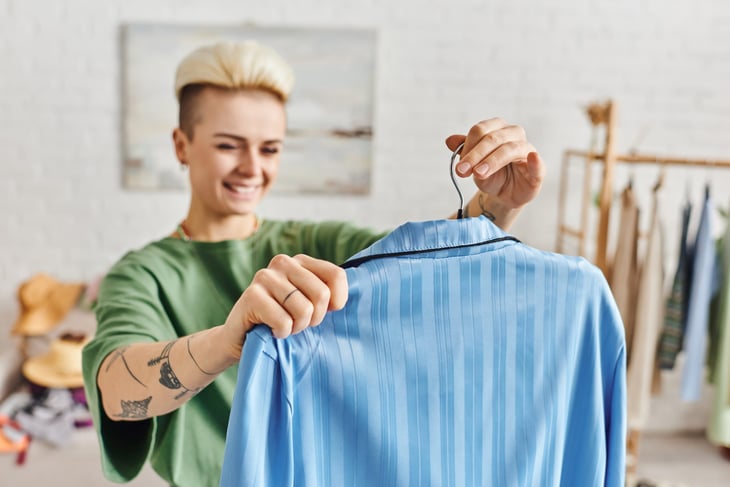
Have you noticed the price of new clothes lately? Call me a tightwad (you wouldn’t be the first), but $60 for an oxford shirt and $80 for a pair of jeans seems excessive, especially when there are other options — like secondhand clothes.
Buying new when used will do is one of many dumb clothes shopping mistakes.
For three decades, I’ve happily avoided retail and embraced resale, filling my closet with well-made, stylish pieces for pennies on the dollar. As part of my online resale business, I also sell contemporary and vintage clothes to buyers all over the world.
But not all clothing is created equal. To find the best pieces — especially when shopping secondhand clothes — you need to know what features to look for and which ones to avoid.
Here are my tips for buying quality secondhand clothing.
What to look for

Finding well-made secondhand clothing doesn’t have to be a guessing game. It just takes a bit of sartorial science. Look for the following indicators of quality.
1. Metal zippers
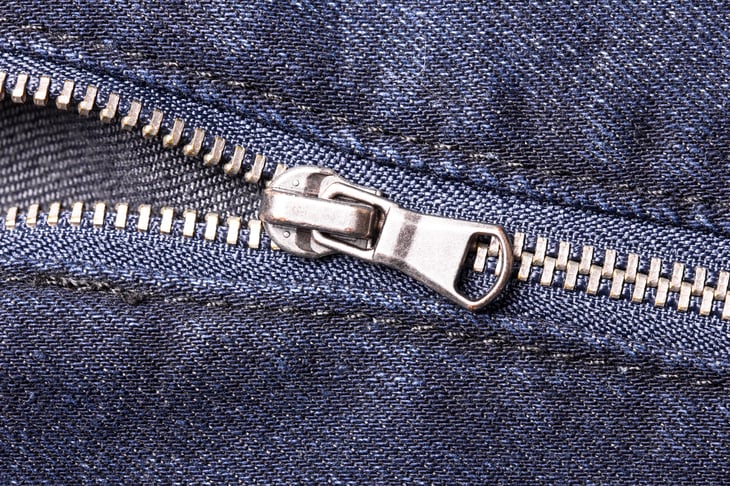
Plastic zippers are less durable, more difficult to zip and easier to pull off the track. Save yourself a lot of frustration by choosing clothes with metal zippers.
Tip: During washing and drying, the teeth of metal zippers can damage fabrics. Zip up garments before laundering; it will help your clothes last longer.
2. Natural fibers
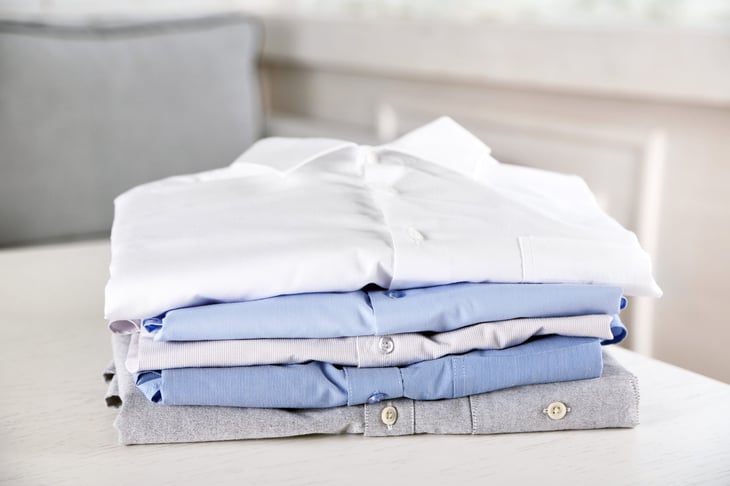
Synthetic fabrics such as polyester, acrylic, spandex and nylon are derived from plastics. Not only are these fibers more prone to pilling, they’re easily damaged by heat from drying and ironing.
For clothing that holds up wash after wash, look for natural materials such as cotton, linen and wool.
3. Patterns that align
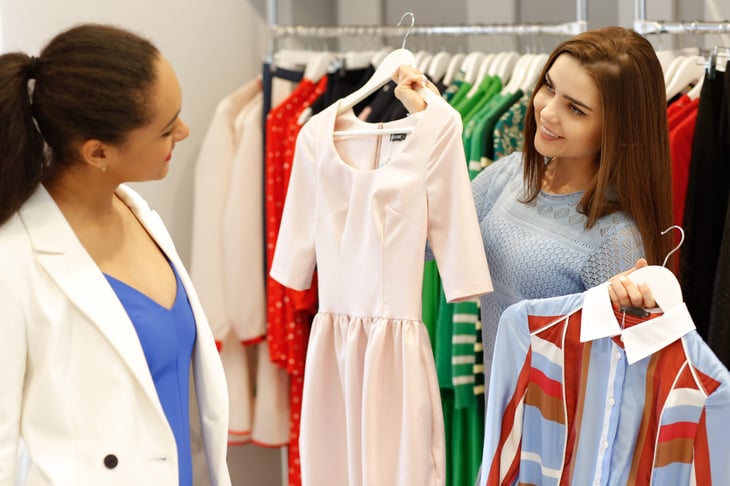
Details matter. Examine the seams of garments to see how well stripes, plaids and other patterns align at the seams.
Not only does a poorly matched pattern look unsightly, it also can be an indicator of hasty, low-quality construction.
4. Durable seams

A seam is where two or more pieces of fabric are joined, held together by stitches. Most wardrobe malfunctions are caused by faulty seams.
To keep all your body parts covered, learn to spot quality seams that lie flat and are free from puckers, raveling and other irregularities.
For durability, the best types of seams are:
- Busted seams: This name refers to the way two pieces of fabric are stitched together and then pressed open. An overlock stitch finishes each raw edge.
- Flat-felled seams: Common in jeans and work attire, these seams are thick and can easily be identified by two lines of visible stitches.
Confused? You can find photos of these seams and others on clothing designer Eileen Fisher’s website.
5. Quality stitching

Without quality stitching, it’s impossible to produce a quality product. Look for stitches that are uniform, straight and reinforced at all stress points, such as the:
- Crotch and seat of pants
- Armholes of shirts
- Yoke (shoulder area) of shirts
- Edges and corners of pockets
- Waistband and belt loops
Not sure about a garment? Give it a quick tug test. Pull lightly on each side of a seam. Good stitches should hold tight and keep the fabric securely in place.
What to avoid

Everyone knows to avoid clothing that’s obviously worn out, but that’s just the start of the list. Garments with any of the following signs should be left on the rack.
1. Snaps and zippers that don’t work

Rule No. 1 when shopping for secondhand clothing: Test everything — twice. Zippers may look fine but be impossible to keep on track. Snaps may not snap securely. Save yourself a little cash and a lot of hassle by examining everything carefully.
2. Stains and fading
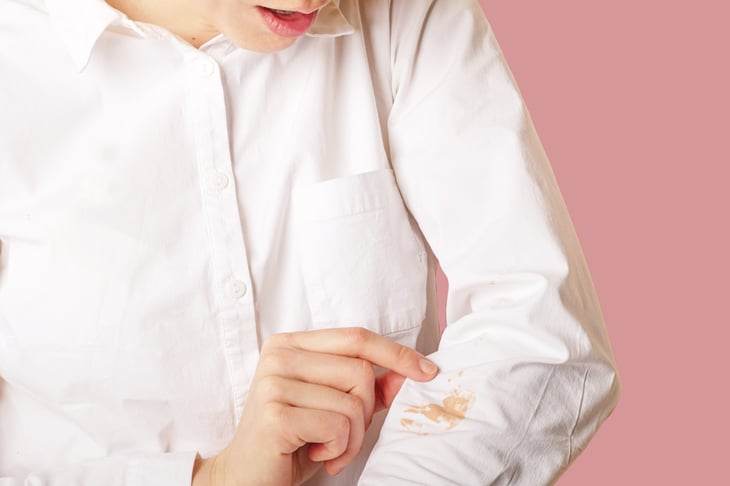
Unless you’re going for an early-1990s distressed look, be careful to avoid stained and faded clothing.
Stains occur in all the usual places — armpits and collars of shirts, tips of ties, fronts of jackets and anywhere on pants. And though it’s possible to remove stains with common household products, I usually avoid the gamble.
Fading can be more difficult to notice. Two types of fading to watch out for:
- Shirts, blouses and jackets that have been hung and exposed to sunlight too long often develop subtle discoloration across the shoulders.
- One piece of a multi-piece outfit sometimes fades more than the other pieces. For example, many men wear the trousers of a suit more frequently than the blazer. Over time, the trousers fade from wear and cleaning and no longer match the rest of the ensemble.
3. Pilling

Pilling: It’s the scourge of clothing lovers everywhere. Who hasn’t been forced to retire a much-loved sweater once those little fuzzballs start to appear? Who hasn’t battled them with razors and lint brushes and those little battery-operated defuzzing devices?
Avoid pilled clothing the way you’d avoid clothing that’s ripped or stained. It’s a hopeless situation. You may be able to beat back pills temporarily, but those loathsome lint balls will reappear after the next wash.
4. Alterations
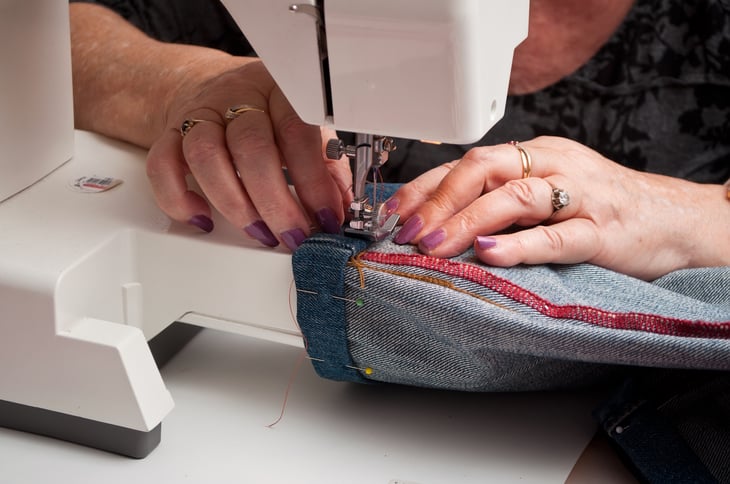
Since nearly every piece of clothing I buy needs to be tailored, much of what I donate has been modified in some way. And while there might be a lucky 5-foot-7-inch guy out there who appreciates my sense of style, I realize most shoppers simply won’t fit into my wardrobe castoffs.
For the same reason, you should avoid secondhand clothing that has been altered.
Buyer beware: Some alterations are difficult to notice. Whenever possible, try on items to make sure pant legs haven’t been tapered, sleeves shortened or side seams taken in.
5. Hanger bumps

Hanger bumps or “shoulder horns” develop when knit shirts and sweaters have been on a hanger for too long. Over time, fabric fibers near the shoulder seam stretch, creating little bumps.
While many websites offer tips on how to get rid of these wardrobe-wreckers, I’ve never found a truly effective method. Save yourself a lot of time and trouble by avoiding any piece of clothing with hanger bumps. And for Pete’s sake, fold — don’t hang — knit clothing.
6. Offensive odors
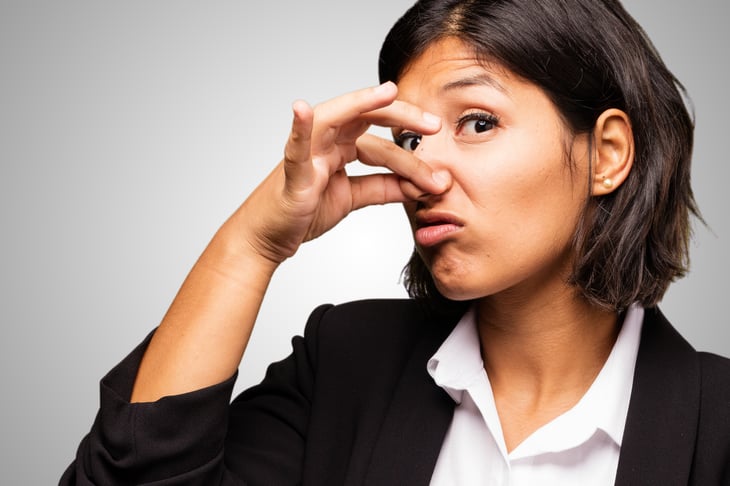
Sorry, but when we talk about secondhand shopping, we’ve got to talk about odors. For those new to the game, remember this: Your nose is one of your most important tools. Before buying anything, give it a quick sniff test.
It’s not just gross smells from tobacco, mildew or pets you’re trying to avoid. Heavy perfumes can be just as obnoxious and almost impossible to get out of fabric.
If the previous owner of that lovely cardigan was a liberal user of White Diamonds perfume, you’re going to smell like White Diamonds every time you wear it. Love it or leave it.





Add a Comment
Our Policy: We welcome relevant and respectful comments in order to foster healthy and informative discussions. All other comments may be removed. Comments with links are automatically held for moderation.